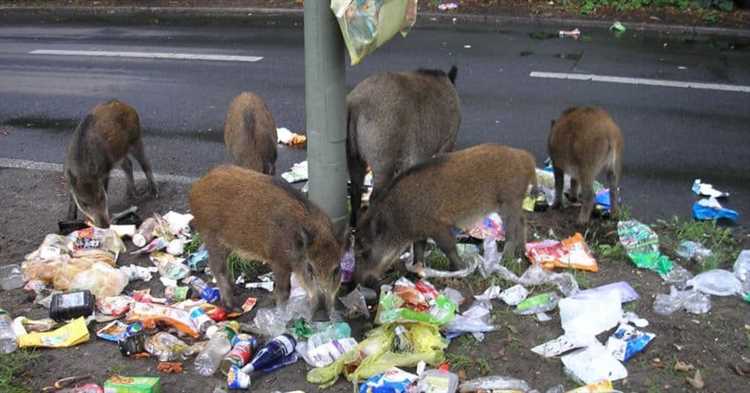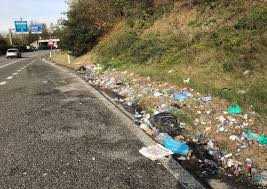
Rome, the Eternal City, known for its rich history, breathtaking architecture, and delicious cuisine, has a darker side hidden beneath its picturesque façade. Beyond the iconic landmarks and romantic atmosphere lies a city struggling with the burden of pollution and grime. In recent years, Rome’s residents and visitors alike have become increasingly aware of the environmental challenges the city faces.
One of the main culprits behind Rome’s pollution problem is the heavy traffic that congests the city’s streets. As cars, mopeds, and scooters navigate through narrow roads, they release harmful emissions into the air, contributing to air pollution. The infamous traffic in Rome not only affects the air quality but also contributes to noise pollution, creating a cacophony that echos through the city’s ancient streets.
Furthermore, Rome’s historical buildings, including its famous monuments and churches, face another aspect of pollution – grime. The combination of pollution, dust, and weathering takes a toll on these architectural marvels, leaving them covered in a layer of dirt. This grime not only detracts from the beauty of Rome’s landmarks but also poses a threat to their long-term preservation and conservation.
Despite these challenges, efforts are being made to combat Rome’s pollution problem. The city has implemented initiatives to reduce traffic and promote the use of public transportation. Additionally, there are ongoing restoration projects to clean and maintain the historical buildings, ensuring their longevity. By shedding light on Rome’s dirty secrets, we can raise awareness and work together to protect this magnificent city and its cultural heritage for future generations.
- Unveiling the Dark Secrets: Rome’s Hidden History of Pollution
- A Walk Through Time: Tracing Rome’s Grime from the Ancient Era
- The Ancient Era: A Grime-Filled Beginning
- Tracing the Grime: A Table of Ancient Monuments
- Modern Dangers: Pollution in Rome Today
- The Culprits: Identifying the Sources of Rome’s Pollution
- Vehicular Emissions
- Industrial Activities
- Open Waste Burning
- Consequences of Negligence: Impact of Pollution on Rome’s Monuments and Health
- Fighting Back: Initiatives to Clean up Rome’s Pollution
- 1. Improving Public Transportation
- 2. Implementing Environmental Regulations
- Q&A
- How has pollution affected Rome over the years?
- What steps are being taken to reduce pollution in Rome?
- What are the major sources of pollution in Rome?
- How does pollution in Rome affect the health of its residents?
- What are the implications of pollution on Rome’s historical sites?
Unveiling the Dark Secrets: Rome’s Hidden History of Pollution
Rome, the Eternal City, is famous for its ancient ruins, majestic monuments, and vibrant culture. However, beneath its picturesque surface lies a long history of pollution and grime that has plagued the city for centuries.
One of the most notorious contributors to Rome’s pollution problem is its transportation system. The city’s congested streets are filled with cars, buses, and scooters, releasing harmful pollutants into the air. The constant traffic jams also lead to a significant amount of noise pollution, further deteriorating the quality of life for the city’s residents.
The pollution in Rome is not limited to its streets. The city’s water sources, such as the Tiber River, have long been contaminated with industrial waste and sewage. This pollution has not only affected the local wildlife and ecosystem but also posed serious health risks to those who consume the contaminated water.
Historically, Rome has been plagued by pollution since ancient times. The city’s rapid urbanization and industrialization in the late 19th and early 20th centuries led to a sharp increase in pollution levels. Factories sprung up in the outskirts of the city, emitting toxic fumes and chemicals into the air. The subsequent industrial revolution only exacerbated the issue, leaving a lasting impact on the city’s environment.
Efforts to tackle pollution in Rome have been made over the years, with the city implementing measures to reduce emissions and promote sustainable transportation. However, the battle against pollution is far from over, and Rome still has a long way to go in order to achieve clean and sustainable living conditions for its residents.
As visitors explore Rome’s centuries-old landmarks, they should also be aware of the city’s dark secrets of pollution. Unveiling this hidden history not only sheds light on the environmental challenges that Rome faces but also calls for a collective effort to protect and preserve the city’s rich heritage for future generations.
A Walk Through Time: Tracing Rome’s Grime from the Ancient Era
Rome, the eternal city, has a rich and storied history that spans over two thousand years. Throughout its long and illustrious existence, the city has accumulated an astonishing amount of grime, pollution, and dirt. Taking a walk through Rome is like taking a walk through time, as the layers of grime on the city’s buildings and monuments tell a fascinating story of the city’s past.
The Ancient Era: A Grime-Filled Beginning
Even in ancient times, Rome was not exempt from the effects of pollution. The city was a bustling hub of activity, with markets, workshops, and homes all contributing to the accumulation of dirt and grime. The use of coal and wood for heating and cooking resulted in air pollution, which settled on the surfaces of buildings and monuments.
The Romans were also avid users of lead, using it for everything from plumbing and cooking to cosmetics. This widespread use of lead resulted in lead particles becoming airborne and settling on surfaces, adding to the city’s layer of grime.
Tracing the Grime: A Table of Ancient Monuments
| Monument | Estimated Age | Grime Accumulation |
|---|---|---|
| Colosseum | 2,000 years | Heavy |
| Pantheon | 2,000 years | Moderate |
| Forum Romanum | 2,500 years | Significant |
| Trevi Fountain | 300 years | Light |
The table above showcases some of Rome’s ancient monuments and their estimated age and level of grime accumulation. The Colosseum, which has been standing for over two thousand years, bears the heaviest layer of grime. The Forum Romanum, with a history spanning 2,500 years, has a significant amount of grime, while the Trevi Fountain, a more recent addition to Rome’s landscape, has a lighter layer.
Walking through these ancient monuments today, it’s hard to imagine the grandeur and splendor they once possessed. The layers of grime on their surfaces serve as a reminder of the city’s long and storied past, offering a glimpse into ancient Rome and its thriving civilization.
Modern Dangers: Pollution in Rome Today
While Rome’s ancient history is truly remarkable, the city’s modern reality is one of pollution and environmental concerns. The rapid urbanization and increase in population have led to significant pollution problems, which pose both short-term and long-term dangers to the city and its inhabitants.
The main sources of pollution in Rome include vehicle emissions, industrial activity, and inefficient waste management. The high number of vehicles on the city’s roads has resulted in elevated levels of air pollution, including particulate matter and nitrogen dioxide. This poses a serious threat to human health, especially for those with respiratory conditions.
Industrial activity in Rome also contributes to pollution levels. Factories and power plants release harmful chemicals into the air and water, which can contaminate both the environment and the food chain. This pollution not only affects local residents but can also have far-reaching consequences for the surrounding regions.
Inefficient waste management is another significant issue in Rome. The city produces a vast amount of waste every day, and its disposal is often not properly handled. This leads to the release of toxins and pollutants into the soil and water, further deteriorating the environmental quality of the city.
| Pollution Type | Effects | Sources |
|---|---|---|
| Air pollution | – Respiratory problems – Reduced lung function – Cardiovascular diseases |
– Vehicle emissions – Industrial activity |
| Water pollution | – Contaminated drinking water – Ecosystem disruption – Harmful effect on aquatic life |
– Industrial waste disposal – Inefficient waste management |
| Soil pollution | – Reduced soil fertility – Contamination of crops and plants – Negative impact on biodiversity |
– Improper waste disposal – Agricultural runoff |
Efforts are being made to combat pollution in Rome. The city has implemented measures to reduce vehicle emissions, such as promoting public transportation and encouraging the use of electric vehicles. Additionally, stricter regulations are being imposed on industrial activities to limit their environmental impact.
However, more needs to be done to effectively address the pollution problems in Rome. It is crucial for the government and the citizens to work together to find sustainable solutions and prioritize the well-being of the environment. Only by taking collective action can Rome hope to overcome its modern dangers and preserve its rich historical legacy for future generations.
The Culprits: Identifying the Sources of Rome’s Pollution
Rome, one of the most historically significant cities in the world, isn’t just known for its stunning architecture and rich culture. Unfortunately, it also has a notorious reputation for its air pollution and other environmental issues. While the city has made some efforts to combat pollution in recent years, there are specific culprits that continue to contribute to Rome’s dirty secret. Let’s explore the sources of pollution and understand how they impact this ancient city.
Vehicular Emissions
One of the biggest contributors to Rome’s pollution problem is vehicular emissions. With a high density of cars and limited public transportation options, the city’s streets are often congested with traffic. This leads to increased emissions from exhaust fumes, releasing harmful substances like carbon monoxide, nitrogen oxides, and particulate matter into the air. The concentration of these pollutants is particularly high in areas with heavy traffic, putting the health of both residents and tourists at risk.
Industrial Activities
Industrial activities also play a significant role in Rome’s pollution. The city is home to several factories and industries that emit pollutants into the air and water. Chemical plants, power plants, and waste processing facilities are among the main sources of pollution. These industries release toxic gases, heavy metals, and other harmful substances, adding to the overall pollution levels. Efforts to regulate and control these emissions are crucial in protecting the environment and public health.
Open Waste Burning
Rome’s waste management system has long been a cause for concern. In the absence of proper waste disposal infrastructure, some residents resort to open burning of waste. This practice releases hazardous fumes and pollutants into the air, worsening the pollution problem. The burning of plastics and other non-biodegradable materials also contributes to the release of toxic chemicals, further compromising the air quality in the city.
Other sources of pollution in Rome include construction activities, inefficient energy use in buildings, and inadequate waste management practices. While efforts are being made to address these issues, it is crucial for the city to implement sustainable solutions and prioritize environmental protection. By identifying and tackling the culprits of pollution, Rome can work towards restoring its image as a clean and vibrant city.
Consequences of Negligence: Impact of Pollution on Rome’s Monuments and Health
Rome, known for its ancient monuments and rich history, is unfortunately not immune to the detrimental effects of pollution. The city’s architectural wonders are suffering the consequences of negligence and environmental pollution, leading to irreversible damage and significant health risks.
The pollution in Rome, primarily caused by industrial emissions, vehicle exhaust, and the burning of fossil fuels, has significantly impacted the city’s monuments. The fine dust particles in the air, known as particulate matter, settle on the surfaces of historical buildings and gradually erode them. The iconic Colosseum, for example, has been darkened and corroded over the years due to the high levels of sulfur dioxide in the air.
In addition to visible damage, pollution has also accelerated the deterioration of ancient artifacts and sculptures. The acidic components present in the pollution lead to chemical reactions that eat away at the stone and marble, causing them to crumble and lose their original glory. This irreversible destruction not only affects the aesthetic appeal of Rome’s monuments but also threatens their structural integrity.
Beyond the impact on architectural landmarks, pollution in Rome poses significant risks to the health of its residents and visitors. The high levels of particulate matter and toxic gases in the air can lead to respiratory problems such as asthma, bronchitis, and lung cancer. The vulnerable population, including children and the elderly, are particularly susceptible to these health hazards.
Moreover, the pollution in Rome has been linked to cardiovascular diseases and neurological disorders. Studies have shown that long-term exposure to air pollution can increase the risk of heart attacks, strokes, and cognitive decline. These health issues not only burden individuals but also place a significant strain on the city’s healthcare system.
The consequences of negligence towards pollution in Rome are far-reaching and demand urgent attention. Efforts should be made to reduce emissions, promote sustainable transportation, and implement strict regulations to protect the city’s cultural heritage and the well-being of its inhabitants. Only through collective action can the grime and pollution that plague Rome be overcome, ensuring a cleaner and healthier future for this magnificent city.
Fighting Back: Initiatives to Clean up Rome’s Pollution

Rome’s pollution problem has become a pressing issue in recent years, prompting various initiatives to tackle the city’s grime and pollution head-on. Here are some of the steps being taken to fight back against Rome’s pollution.
1. Improving Public Transportation
One major initiative is the improvement of public transportation systems in Rome. This includes expanding the metro system, introducing electric buses, and encouraging cycling. By providing efficient and eco-friendly alternatives to private vehicles, the aim is to reduce the number of cars on the road and decrease air pollution.
2. Implementing Environmental Regulations
The local government has also been implementing stricter environmental regulations to combat pollution. This includes laws to reduce industrial emissions, enforce stricter emission standards for vehicles, and limit the use of certain pollutants. By holding individuals and businesses accountable for their actions, Rome aims to create a cleaner and healthier environment for its residents and visitors.
These are just a few examples of the initiatives being taken to clean up Rome’s pollution. Through a combination of improving public transportation and implementing stricter regulations, the city is fighting back against its grime and pollution, striving to create a more sustainable and environmentally friendly future.
Q&A
How has pollution affected Rome over the years?
Pollution has had a significant impact on Rome over the years. The city’s high levels of smog and air pollution have caused health problems for its residents and damaged historical monuments and structures.
What steps are being taken to reduce pollution in Rome?
Several measures are being taken to reduce pollution in Rome. These include promoting the use of public transportation, implementing car-free zones, encouraging the use of electric vehicles, and implementing stricter emission standards for industries.
What are the major sources of pollution in Rome?
The major sources of pollution in Rome include vehicular emissions, industrial pollution, and the burning of fossil fuels. Additionally, the city’s high population density contributes to the pollution problem.
How does pollution in Rome affect the health of its residents?
Pollution in Rome has a negative impact on the health of its residents. High levels of air pollution can lead to respiratory problems, allergies, and increased risk of cardiovascular diseases. Long-term exposure to pollution can also reduce the life expectancy of individuals.
What are the implications of pollution on Rome’s historical sites?
Pollution has caused significant damage to Rome’s historical sites. The air pollution has accelerated the deterioration of ancient monuments and structures, corroding their surfaces and causing them to lose their original beauty. Preservation efforts are underway to protect and restore these valuable cultural heritage sites.
